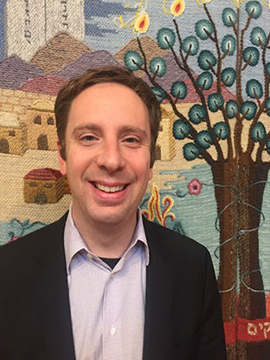Looking Out for Those in Need

This week’s double Torah portion, Parashat Tazria/M’tzora, is a doozy! The poor bar/bat/bet mitzvah student whose celebratory moment falls on this Shabbat! Our Torah reading this week focuses on a skin disease called tzaraat. It can be quite challenging for anyone to address the intricacies of skin disease! What is most challenging to me is that the Torah states once a person shows signs of tzaraat, they must separate themselves from the rest of the community.
Leviticus 13:4 states that if a priest diagnoses someone with tzaraat, “the priest shall isolate the person for seven days.”
We are not exactly sure of the reasoning behind this commandment. One opinion is that the community didn’t wish to look upon the disease, so they separated the person from the rest of society.
Now, you might be thinking: “Hey, that person might be contagious! They could infect others with their disease!” A valid point, especially after we’ve lived through the challenging days of COVID-19.
However, our rabbis and sages believed that tzaraat occurred because of spiritual concerns, not necessarily physical ones. Tzaraat was brought upon someone due to their own actions, not by a contagion. Midrash Tanchuma, Metzora 4:1 teaches:
What causes tzaraat? The affliction comes from eleven things: (1) idolatry, (2) desecration of God’s name, (3) unchastity, (4) theft, (5) slander, (6) false witness, (7) the judge who perverts justice, (8) swearing in vain, (9) one who enters a domain which is not theirs, (10) one who thinks false thoughts, and (11) one who instigates quarrels among siblings. Some also say, “for the evil eye” (for being stingy).
The disease of tzaraat isn’t contagious in the medical sense; it’s not brought about by touching, coughing, or germs. Separating the person doesn’t prevent the disease from infecting others. Isolation only keeps the person removed from the community. To put it another way, “out of sight, out of mind!”
We too often have the luxury and privilege of looking the other way. Many of us live in neighborhoods far from homelessness, poverty, and devastation. If we don’t venture outside our bubble, we won’t see those whose lives are different. If we don’t interact with those experiencing hardship, we will be unable to hear their stories, learn about their experience, or see their trauma.
Those infected with tzaraat were not completely separated from society. The kohein (priest) would meet with them every seven days to look at their skin to see if the disease had passed in order to welcome them back into society. As the Midrash teaches, “The kohein who sees the person the first time, must see the person the second time” (Sifra, Tazria Parashat Negaim 2:13). There was a relationship that existed between the kohein and the infected person. The kohein knew the person, their body, the disease, and was the individual responsible for being by their side throughout this entire ordeal.
As the kohein looked into the eyes of the sick and the challenged individual and took time to build a relationship with those in need, so too must we. As the kohein recognized that everyone was part of the community, not just those who looked, acted, or lived a certain way, so too must we. May we open our full selves to welcome the breadth of human experience: wholeness and brokenness, rich and poor, sick and well, and young and old.

